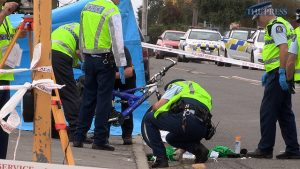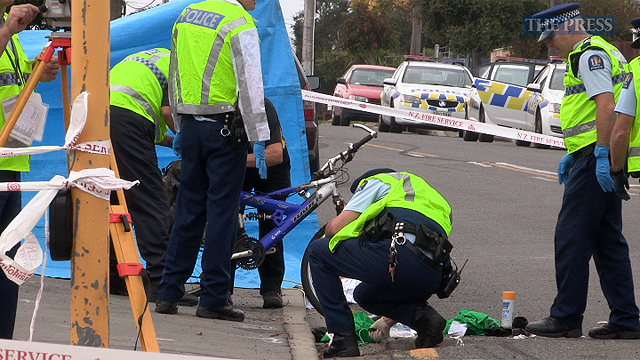I already had this article ready to post before the unfortunate events of last night – my condolences to family and friends. I’d like to think that media reporting around cycling safety is a little more enlightened now than seven years ago (although it still seems to be all these inanimate “cars” that do all the crashing into “cyclists”…). This article, originally from July 2013, highlights the problems when news reports paint a picture that may imply the wrong thing…

I’ve had an interesting conversation recently with someone working on a PhD at the University of Canterbury looking at transport identities. I’m hopeful that she will write us an article or two here so I’m not going cover much of the work that she has been doing analysing New Zealand media articles about cyclist accidents. However some articles by James D Schwarz who writes in the Urban Country Bicycle Transportation Blog, which seems to be focused largely on Toronto, caught my eye.
The first article was called, Blaming the victim gives a false sense of security to people. In this case the police had not taken a good look at the circumstances of a cyclist’s death and told his family that he had run a red light, when in fact he had been stationary waiting at an intersection when he was killed by a driver with numerous prior driving infractions. Schwarz suggests, perhaps rightly, that the police just assumed the cyclist must be in the wrong and assumed that the driver must have been blameless when in fact that was far from true. We’ve seen many other articles that highlight this issue and of course seems to have been reflected in New Zealand in the recent series of events around Jane Farrelly’s death in which the driver of the truck that killed her was not charged. I wonder what would have happened if a motorist had been killed rather than a cyclist? These are very obvious instances of a car centric bias but there is quite a bit more to it.
The second article looks at the staggering number of deaths caused by motorists and the ways in which the media discuss what happens. In this case he looks at an article about a motorist who injured 10 people including 6 pedestrians because of an illegal manoeuvre. The journalist listed a whole range of pedestrian behaviours which had nothing to do with the accident in question but only noted that the driver performed a manoeuvre.
It does seem like there are some issues in the way the people who are driving motor vehicles are often not discussed – as in the motor vehicle crossed the centre line (rather than the motorist who drove it that way) while it was the cyclist that ran the red light. Likewise, even coroners, it seems, like to put the responsibility for road cycling deaths back on cyclists when in fact it was the motorist that was in the wrong; for example, in suggesting that cyclists should be required to wear high viz rather than motorists who need to take a second look at intersections. This is especially problematic when the cyclist was wearing high viz at the time he was killed, and would seem to be a case of putting the responsibility for road safety back on those who are most vulnerable on the road.
Take a look at this article – a nice article that immediately puts all the blame on the actions of the cyclist. Do we know whether the car that hit him was giving him a 1.5 m gap? The judgement has been made – it was all the cyclist’s fault and nothing to do with the driver. Likewise check out this article. In comparison, little is said about this accident except that the car veered into this child who was just “in the wrong place at the wrong time” (actually he was in the right place!) and that was asserted by the school principal rather than given as a fact by the journalist.
So next time you see an article, take a look at how traffic accidents are reported, and even watch the way you talk about behaviour on the roads. We seem to be very quick to lay the blame with vulnerable road users and not nearly so quick to lay it with motorists. Why is it that we often put the responsibility for accidents back on the most vulnerable road users? Is it just a way of helping ourselves feel more secure? Or are we also buying into the car centric culture that surrounds us?

